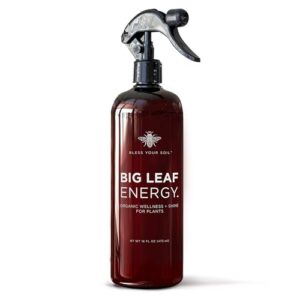Being a plant parent can be a rewarding experience, but it can also be challenging at times. However, with a few simple indoor gardening tips, you can maximize your plant parent potential and create a thriving indoor jungle that brings joy and beauty to your space.
First and foremost, it’s important to choose the right plants for your indoor garden. Consider factors such as the amount of light and space available in your home, as well as your level of gardening experience. Some plants, like spider plants and pothos, are known for being low-maintenance and easy to care for, making them great choices for beginners. On the other hand, if you’re more experienced and have a sunny spot to work with, you might want to try your hand at growing herbs or even fruit-bearing plants like citrus trees.
Once you’ve selected your plants, it’s time to think about their needs. Just like humans, plants require water, food, and sunlight to thrive. Make sure to water your plants regularly, checking the soil for dryness before watering to avoid overwatering, which can lead to root rot. Different plants have different watering needs, so be sure to research each plant’s specific requirements.
In addition to water, plants also need nutrients to grow. You can use a balanced fertilizer to provide your plants with the essential nutrients they need to thrive. Be sure to follow the instructions on the fertilizer package, as applying too much can harm your plants.
Sunlight is another crucial element for plant growth. Most plants need at least six hours of sunlight per day, so be sure to place your plants in a sunny spot, preferably near a window. If you don’t have a lot of natural light in your home, you can also supplement with artificial grow lights to help your plants thrive.
In addition to providing your plants with the basics, it’s important to regularly check them for pests and diseases. Common indoor pests include spider mites, aphids, and mealybugs, which can wreak havoc on your plants if left unchecked. Keep an eye out for any signs of trouble, such as yellowing leaves or sticky residue, and take action to address the issue before it spreads.
Another important indoor gardening tip is to repot your plants when needed. As plants grow, they may outgrow their current pots, leading to root-bound conditions that can stunt their growth. Keep an eye out for roots growing out of the drainage holes or circling around the pot, and transfer your plants to a larger container to give them room to grow.
In addition to repotting, regular pruning can also help to keep your plants healthy and vibrant. Pruning can help promote new growth, remove dead or diseased parts, and shape your plants to encourage bushier growth. Be sure to use clean, sharp pruning shears to avoid damaging your plants.
Finally, don’t forget to show your plants some love and attention. Talking to your plants, playing music for them, and even giving them a gentle misting can help create a positive environment for growth. Remember that plants are living beings that respond to care and attention, so don’t be afraid to get a little creative in how you care for them.
By following these indoor gardening tips, you can maximize your plant parent potential and create a lush and thriving indoor garden that brings joy and beauty to your home. With a little love and attention, your indoor jungle will flourish, providing you with a sense of accomplishment and a connection to the natural world. So roll up your sleeves, get your hands dirty, and watch your plants grow and thrive under your care. Happy gardening!






